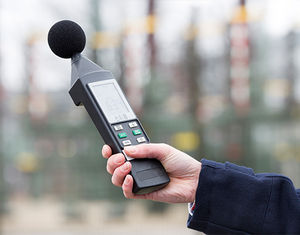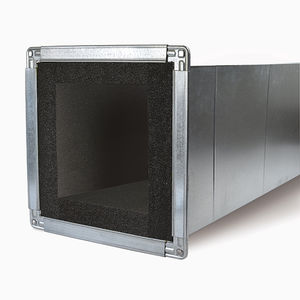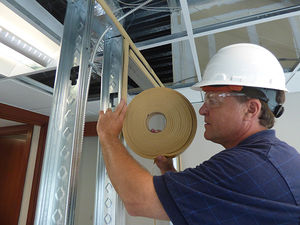How Loud is Too Loud?
 Noise is one of the leading causes for the 466 million people around the world living with hearing loss. Noise-induced hearing loss can be cumulative from daily exposure or sometimes this condition is the result of a single, very loud event. The majority of sounds people are exposed to are at safe listening levels, but certain sounds in our environment can exceed safe levels and cause damage to our ears. The unit used to measure environmental sound intensity is the decibel (dBA) and experts agree that continued exposure to noise above 85 dBA will eventually harm hearing. Symptoms of hearing loss can be ringing or buzzing in the ears (tinnitus), slight muffling of sounds, difficulty understanding people speak, missing tones or signals, and deafness. Other health risks associated with excessive noise or intrusive sounds are chronic sleep disturbance, increased stress, tension, and even irritation and anger. All these things can contribute significantly to reducing one’s quality of life.
Noise is one of the leading causes for the 466 million people around the world living with hearing loss. Noise-induced hearing loss can be cumulative from daily exposure or sometimes this condition is the result of a single, very loud event. The majority of sounds people are exposed to are at safe listening levels, but certain sounds in our environment can exceed safe levels and cause damage to our ears. The unit used to measure environmental sound intensity is the decibel (dBA) and experts agree that continued exposure to noise above 85 dBA will eventually harm hearing. Symptoms of hearing loss can be ringing or buzzing in the ears (tinnitus), slight muffling of sounds, difficulty understanding people speak, missing tones or signals, and deafness. Other health risks associated with excessive noise or intrusive sounds are chronic sleep disturbance, increased stress, tension, and even irritation and anger. All these things can contribute significantly to reducing one’s quality of life.
Rating Building Materials
 The main point that many forget is that hearing loss due to noise exposure is completely preventable. Through adequate hearing protection, acoustical design, sustainable engineering, and noisy environment avoidance, people can prevent hearing loss and gain the fundamental benefits of peace and quiet. Quietness is actually strictly monitored and measured when it comes to building occupancy and building materials. Materials are tested to the ASTM C423 protocol to measure the amount of reverberant energy absorbed by the test materials. The Sound Absorption Average (SAA) is defined in ASTM C423-17 Section 3.1.1 as the average, rounded to the nearest integer multiple of 0.01, of the sound absorption coefficients of a material for the twelve one-third octave bands from 200 Hz through 2500 Hz, inclusive. This measure is similar to NRC or Noise Reduction Coefficient but looks at sound performance over a wider range of frequencies than NRC.
The main point that many forget is that hearing loss due to noise exposure is completely preventable. Through adequate hearing protection, acoustical design, sustainable engineering, and noisy environment avoidance, people can prevent hearing loss and gain the fundamental benefits of peace and quiet. Quietness is actually strictly monitored and measured when it comes to building occupancy and building materials. Materials are tested to the ASTM C423 protocol to measure the amount of reverberant energy absorbed by the test materials. The Sound Absorption Average (SAA) is defined in ASTM C423-17 Section 3.1.1 as the average, rounded to the nearest integer multiple of 0.01, of the sound absorption coefficients of a material for the twelve one-third octave bands from 200 Hz through 2500 Hz, inclusive. This measure is similar to NRC or Noise Reduction Coefficient but looks at sound performance over a wider range of frequencies than NRC.
STC or Sound Transmission Class ratings represent the sound-blocking properties of a material. This is particularly important in commercial construction where many occupants could be affected by noise throughout the space. Materials must be tested according to the ASTM E90 standard and are assigned a rating that essentially measure how much noise was blocked using the test product compared to a control environment. The higher the rating the more sound that is blocked. For instance, using two sheets of drywall in a partition wall will block more sound that using one sheet, therefore two sheets get a higher rating.
Intrinsic Benefits of Quiet
 Engineers can positively impact and reduce noise by incorporating improved acoustic design into building development and sustainability efforts. Noise can come in from outside a building or within a building and sound can transfer from one space to another. By considering things like HVAC noise generation, ductwork, mechanical system noise transmission, and structure-borne sound, engineers can help mitigate these disturbances by using sustainable building materials. Acoustical duct liner and wrap like the ArmaFlex® family of insulation solutions are a sound noise reduction strategy. Duct liners in the ArmaFlex family can attribute to reducing the sound coefficient significantly in mid ranges. Our fiber-free, closed-cell, thermal and acoustical insulation products are engineered to attenuate HVAC noise, safeguard IAQ, and reduce energy loss when used to line or wrap HVAC ductwork.
Engineers can positively impact and reduce noise by incorporating improved acoustic design into building development and sustainability efforts. Noise can come in from outside a building or within a building and sound can transfer from one space to another. By considering things like HVAC noise generation, ductwork, mechanical system noise transmission, and structure-borne sound, engineers can help mitigate these disturbances by using sustainable building materials. Acoustical duct liner and wrap like the ArmaFlex® family of insulation solutions are a sound noise reduction strategy. Duct liners in the ArmaFlex family can attribute to reducing the sound coefficient significantly in mid ranges. Our fiber-free, closed-cell, thermal and acoustical insulation products are engineered to attenuate HVAC noise, safeguard IAQ, and reduce energy loss when used to line or wrap HVAC ductwork.
Noise also travels through buildings as sound vibrations which get passed from one structural member (drywall, stud, floor, etc.) to the next. Engineers and designers can prevent noise from disturbing occupants by using ArmaComfort® MTD, a custom formulated elastomeric foam tape solution that reduces structure-borne sound passing through partition walls. MTD tape provides a 7-point increase in STC rating as compared to using no mechanical decoupling product.
Protect your hearing and health with Armacell.

